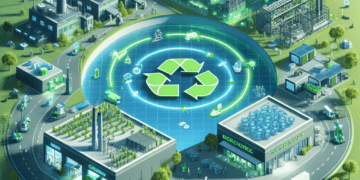The complexity of supply chains is often underestimated. Typically, products are not made from a single material or in a single location; they are the result of numerous interconnected steps. For instance, even a basic item like a cotton T-shirt undergoes a series of processes from its production, through shipping, to its sale, usage, and eventual disposal. Traditionally, these supply chains have been linear, but a shift towards a circular model is gaining momentum.
Circular supply chains represent a transformative approach, deviating from the traditional linear model. This change is crucial in addressing the material and resource challenges in the global economy, where an astounding 100 billion metric tons of materials are processed annually. Supply chain professionals play a pivotal role in this transformation, managing the sourcing, movement, and processing of these materials.
The urgency for adopting circular supply chains is highlighted by the increasing vulnerability of linear models to global disruptions, such as pandemics and climate-related events. These disruptions not only threaten material availability and price stability but also have significant financial implications for businesses. Moreover, the environmental impact of linear supply chains is substantial, with Scope 3 emissions accounting for a considerable portion of greenhouse gas emissions for consumer goods companies.
Circular supply chains offer a sustainable alternative, decoupling resource consumption from revenue generation. This model enhances material security, reduces price volatility, supports environmental objectives, and builds resilience against long-term disruptions.
However, transitioning to circular supply chains is challenging and requires strategic planning. Nine critical areas have been identified for effective transformation:
- People and Structure: Organizational transformation is essential. Companies like HP are pioneering this shift by restructuring and training their teams on circular economy principles.
- Network Design: Implementing reverse logistics for material recovery and redesigning supply networks, as demonstrated by CHEP, can reduce emissions and improve circularity.
- Supplier Engagement: Partnerships with suppliers are crucial for the consistent quality and availability of circular materials, as seen in Danone’s collaboration with dairy farmers.
- Data and Quality: Technology plays a key role in tracking and maintaining the quality of recycled materials, exemplified by Niaga’s digital product passports.
- Metrics and Performance Management: Developing new metrics to evaluate circular supply chains is essential for capturing their full value and driving improvement.
- Business Models and Product Design: Collaborative efforts across departments are necessary to streamline the circular flow of materials and products.
- Customer Engagement: Encouraging consumer participation in returning and recycling products is vital for sustaining circular supply chains.
- Financial Resources: Financial strategies need to be reevaluated to support the transition towards circularity, focusing on long-term value rather than immediate returns.
- Policy and Legislation: Advocacy for supportive legislation and common standards is crucial to facilitate the adoption of circular supply chains on a larger scale.
In conclusion, transitioning to a circular supply chain model is not only a strategic imperative for businesses seeking sustainability and resilience but also a necessary evolution in the face of global environmental and economic pressures.
Discover comprehensive supply chain report news insights at The Supply Chain Report. For international trade resources, visit ADAMftd.com.
#TheSupplyChainReport #CircularSupplyChain #SustainabilityInBusiness #SupplyChainInnovation #GreenLogistics #CorporateResponsibility #SupplyChainManagement #SupplyChainResilience #EnvironmentalImpact #SupplyChainNews

















